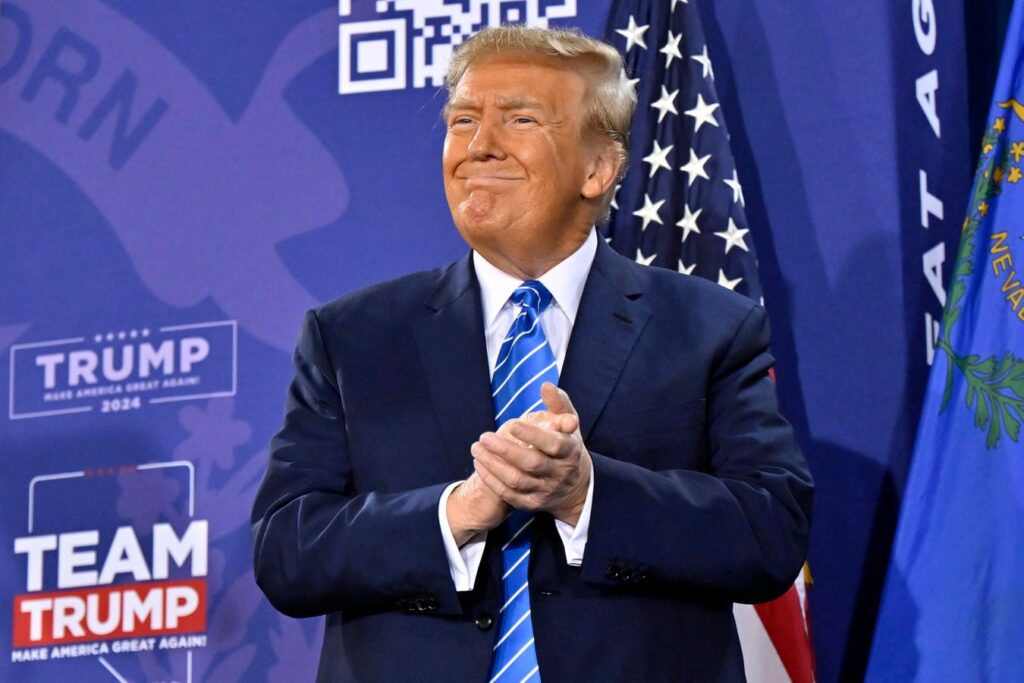In the context of the 2024 presidential election, former President Donald Trump has made ambitious promises regarding the use of tariff revenue to fund various initiatives. According to analysis from the Tax Policy Center, Trump’s proposed tariffs could generate around $3.7 trillion over the next decade. However, after accounting for the resulting economic impacts—such as increased prices of imported goods—the net revenue is estimated to be about $2.8 trillion. This projection falls significantly short of covering the extensive and often unspecified campaign pledges Trump has made, raising concerns that such financial plans could ultimately exacerbate the federal debt rather than alleviate it. Compounding this issue, the Committee for a Responsible Federal Budget estimates that Trump’s proposals could potentially increase federal debt by $7.5 trillion within the same timeframe.
Trump’s plans include a myriad of initiatives financed by tariff revenue, such as replacing the income tax, funding a child care initiative, creating a U.S. sovereign wealth fund, eliminating the federal budget deficit, and addressing the national debt. However, the economic feasibility of these claims remains questionable. For instance, even if tariffs were operational, they would only cover about 8% of the projected federal individual income tax revenue over the next decade, falling short of addressing the additional costs associated with extending the 2017 Tax Cuts and Jobs Act. These facts raise valid concerns regarding the sustainability of his financial strategies as they are presently articulated.
The revenue from tariffs would certainly help narrow the federal deficit in the short term but would not sufficiently address the overall national debt. Current estimates suggest that the national debt could rise to approximately $50 trillion by 2034, and the anticipated deficit for 2025 could approach $2 trillion. With tariffs projected to reduce this year’s deficit by a mere $200 billion, the initiative is unlikely to be a viable method for managing long-term national debt.
Trump has also floated the idea of establishing a U.S. sovereign wealth fund, although concrete details surrounding this initiative are lacking. If implemented, this fund could potentially become one of the largest investment funds globally, rivaling that of other nations, such as Saudi Arabia. Yet, even in the best-case scenario, where a significant portion of tariff revenue is directed toward this fund, the remaining resources would be insufficient to cover Trump’s broad array of campaign promises. This reality underscores the fundamental challenge of balancing ambitious funding priorities with available financial resources.
Another area where Trump has proposed the use of tariff revenue relates to child care, hinted at by his running mate Sen. JD Vance’s proposal for a $5,000 Child Tax Credit. A plan of this nature could cost around $2.7 trillion over ten years—almost precisely matching the expected tariff revenue. While seemingly feasible, this allocation would tie up a substantial portion of the anticipated funds, leaving limited room for other significant initiatives Trump pledges to support.
In conclusion, Trump’s reliance on tariff revenue as a financial panacea appears impractical and may ultimately serve more as a campaign talking point than a viable economic strategy. The promise of pulling off intricate financial maneuvers could evoke imagery of a magician conjuring tricks on stage, suggesting that these proposals may ultimately be illusions rather than realities. If higher tariffs were introduced, the adverse effects on consumer prices and economic demand could erode the projected benefits, resulting in diminished returns on tariff revenue and a growing federal debt. Without clearer, more substantiated frameworks for achieving these ambitious proposals, skepticism looms large over Trump’s fiscal plan for the economy moving forward into the election year.

